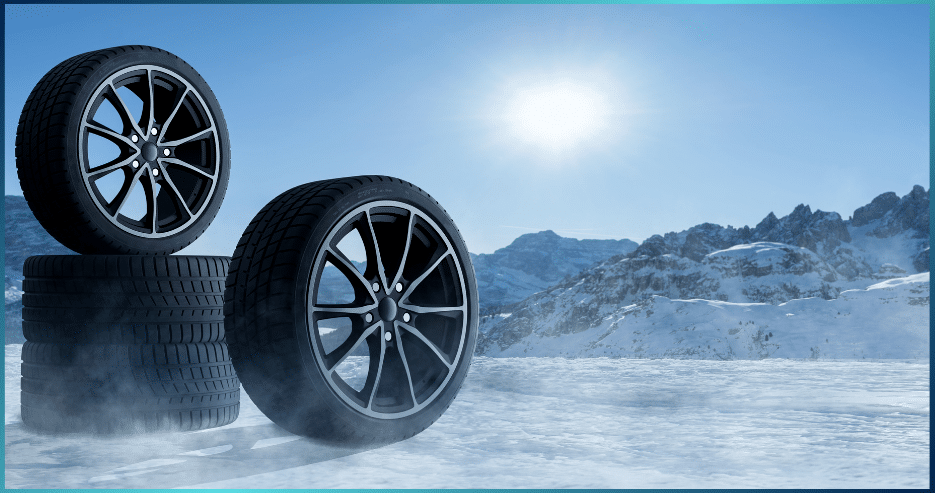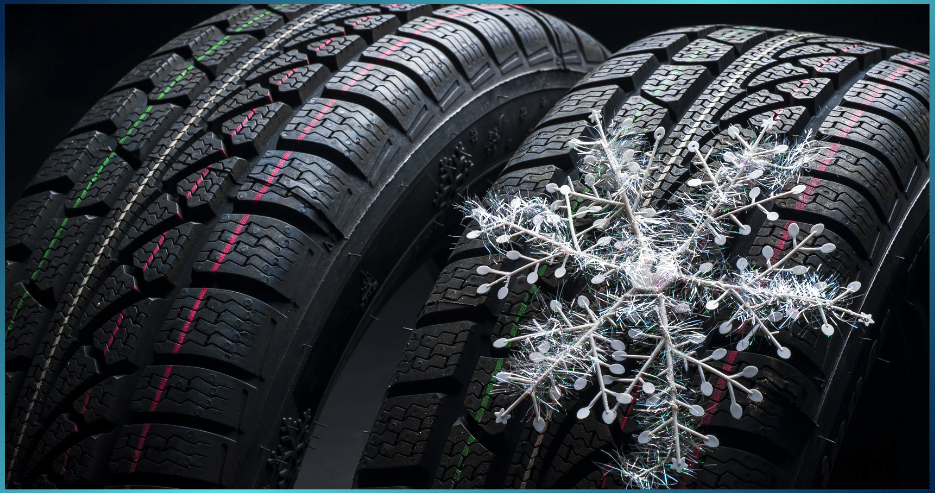When it comes to choosing the right types of tire for your vehicle, understanding the differences between all season vs all weather tires is crucial for making an informed decision. These two popular tire categories often create confusion among drivers, as their names sound quite similar but they serve different purposes and perform differently in various weather conditions. As you navigate through the complexities of tire selection, it’s essential to understand how each type can affect your vehicle’s performance, safety, and overall driving experience.
Modern vehicles come with various tire options designed to meet specific driving needs and weather conditions. While both all season and all weather tires are engineered to handle multiple weather conditions, they have distinct characteristics that set them apart. Your choice between these two types can significantly impact your driving safety and comfort throughout the year, especially if you live in an area with varying seasonal weather patterns.
What Are All Season Tires?
All season tires represent a versatile solution designed to provide reliable performance across a range of moderate weather conditions. These tires have become increasingly popular since their introduction by Goodyear in 1977, marking a significant advancement in tire technology. Today, they are the most common type of tire found on passenger vehicles in regions with mild to moderate climate variations.
| Feature | Description | Performance Impact |
|---|---|---|
| Tread Pattern | Symmetric or asymmetric design | Balanced handling and noise reduction |
| Rubber Compound | Medium hardness blend | Good year-round grip in moderate temperatures |
| Tread Life | 40,000 to 100,000 miles | Long-lasting performance in normal conditions |
| Temperature Range | 20°F to 100°F | Best performance in moderate temperatures |
| Wet Grip | Moderate to good | Reliable handling in light rain |
The versatility of all season tires makes them an attractive option for many drivers. These tires blend various performance characteristics to deliver consistent handling and comfort throughout most of the year. However, their capabilities have certain limitations, particularly in extreme weather conditions, which is why understanding their specific features and performance attributes is crucial for making an informed decision.
How Do All Season Tires Perform in Different Conditions?
All season tires demonstrate varying levels of performance across different weather conditions, with their effectiveness largely dependent on the specific situation and temperature range. Their engineering focuses on providing balanced performance rather than excelling in any particular condition, making them suitable for regions with moderate climate variations.
In dry conditions, these tires deliver impressive performance thanks to their optimized tread compounds and patterns. The rubber composition is designed to maintain grip while providing longer tread life, allowing for consistent handling and braking on both warm and cool surfaces. This balanced approach helps explain why approximately 97% of new vehicles come equipped with all season tires from the factory.
Modern all season tires incorporate advanced technologies to enhance wet-weather performance. The tread patterns feature specially designed channels and grooves that help evacuate water, reducing the risk of hydroplaning. According to Consumer Reports’ tire testing, many current all season models show significant improvements in wet-weather grip compared to earlier generations.
Can You Use All Season Tires in Winter?
The winter performance of all season tires presents some notable limitations that drivers should carefully consider. While these tires can handle light winter conditions, their capabilities diminish significantly as temperatures drop below freezing and in more challenging winter weather scenarios.
| Winter Condition | All Season Tire Performance | Safety Consideration |
|---|---|---|
| Light Snow | Moderate grip | Reduced braking distance |
| Deep Snow | Poor performance | High risk of getting stuck |
| Ice | Limited traction | Significantly longer stopping distance |
| Slush | Fair handling | Moderate hydroplaning resistance |
| Below 45°F | Reduced grip | Harder rubber compound |
Understanding these winter performance limitations is crucial for safe driving. The National Highway Traffic Safety Administration reports that tire-related crashes increase significantly during winter months, highlighting the importance of choosing appropriate tires for your specific climate and driving conditions.
What Are the Advantages of All Season Tires?
All season tires offer several compelling benefits that make them a popular choice for many drivers. Their versatility and convenience have contributed to their widespread adoption across various vehicle types and driving conditions.
The primary advantage lies in their year-round usability in moderate climates, eliminating the need for seasonal tire changes. According to the Tire and Rubber Association, this convenience factor saves drivers an average of $150-200 annually in tire changeover costs. Additionally, all season tires typically offer excellent tread life, with premium models often backing their durability with warranties covering up to 70,000 miles.
These tires also provide balanced performance characteristics that suit most daily driving needs. The Automobile Protection Association notes that modern all season tires deliver improved handling stability and reduced road noise compared to specialized seasonal tires, making them an excellent choice for everyday commuting and family vehicles.
Are All Season Tires Good for Fuel Economy?
The relationship between all season tires and fuel economy represents an important consideration for cost-conscious drivers. These tires are designed with efficiency in mind, incorporating features that help optimize fuel consumption while maintaining necessary performance characteristics.
| Tire Feature | Fuel Economy Impact | Additional Benefits |
|---|---|---|
| Low Rolling Resistance | 2-4% fuel savings | Reduced CO2 emissions |
| Optimized Tread Design | Better aerodynamics | Lower road noise |
| Balanced Compound | Consistent performance | Extended tire life |
| Weight Optimization | Improved efficiency | Enhanced handling |
| Proper Inflation | Up to 3% better MPG | Even wear pattern |
Research from the U.S. Department of Energy indicates that proper tire selection and maintenance can significantly impact fuel economy. Modern all season tires with low rolling resistance technology can improve fuel efficiency by up to 4% compared to traditional tire designs, potentially saving hundreds of dollars annually in fuel costs.
What Are the Disadvantages of All Season Tires?
All season tires come with certain limitations that drivers should carefully consider before making their purchase decision. Understanding these drawbacks helps ensure you make an informed choice that aligns with your specific driving needs and local weather conditions.
One significant disadvantage is their compromised performance in extreme weather conditions. According to TireRack’s extensive testing, all season tires show up to 35% longer stopping distances on snow and ice compared to dedicated winter tires. This performance gap becomes even more pronounced when temperatures drop below 45°F (7°C), as the rubber compound becomes notably stiffer.
The “jack of all trades” nature of all season tires means they don’t excel in any particular condition. While they perform adequately in moderate conditions, they can’t match the precise handling of summer tires in warm weather or the superior traction of winter tires in cold conditions. The Bridgestone Tire Safety Foundation emphasizes that this compromise can be particularly noticeable during emergency maneuvers or sudden weather changes.
What Are All Weather Tires?

All weather tires represent a more recent innovation in tire technology, designed to bridge the gap between traditional all season tires and dedicated winter tires. These tires carry the Three-Peak Mountain Snowflake (3PMSF) symbol, indicating they meet specific snow performance requirements.
| Characteristic | Performance Level | Usage Recommendation |
|---|---|---|
| Winter Handling | Above average | Suitable for regular snow driving |
| Summer Performance | Good | Reliable in warm conditions |
| Wet Grip | Very good | Enhanced safety in rain |
| Tread Life | 50,000-60,000 miles | Moderate durability |
| Temperature Range | -4°F to 95°F | Wide operating window |
The emergence of all weather tires has revolutionized year-round tire usage, particularly in regions with variable climate patterns. These tires offer a compelling balance of performance characteristics that make them increasingly popular among drivers seeking enhanced winter capability without sacrificing warm-weather performance.
How Are All Weather Tires Different from All Season?
The distinction between all weather and all season tires lies primarily in their design philosophy and performance capabilities. All weather tires incorporate more aggressive tread patterns and specialized rubber compounds that maintain flexibility in colder temperatures while still performing adequately in warmer conditions.
Research from the Nordic Tire Testing Alliance shows that all weather tires maintain up to 60% better traction in snowy conditions compared to traditional all season tires. This improved performance stems from their unique tread design, which features deeper grooves and more numerous sipes (small slits in the tread blocks) that help maintain grip in challenging winter conditions.
The rubber compounds used in all weather tires represent a significant technological advancement. According to Continental Tire’s research department, these compounds remain pliable at temperatures well below freezing while still providing adequate handling characteristics during warmer months.
Do All Weather Tires Have the Mountain Snowflake Symbol?
One of the most significant distinctions of all weather tires is their certification for winter performance, indicated by the Three-Peak Mountain Snowflake (3PMSF) symbol. This isn’t just a marketing feature – it represents a specific performance standard that these tires must meet.
| Certification Requirement | Performance Threshold | Testing Condition |
|---|---|---|
| Acceleration Test | 10% better than reference | Packed snow surface |
| Traction Index | Minimum 110% | Standardized snow track |
| Braking Distance | Within specified range | Snow-covered road |
| Temperature Testing | -22°F to 104°F | Various weather conditions |
| Durability Check | Minimum standard | Extended winter use |
The Tire and Rubber Association of Canada confirms that all properly designated all weather tires must pass rigorous testing to earn this certification. These tests evaluate performance in specific winter conditions, ensuring the tires meet minimum safety standards for winter driving.
What Makes All Weather Tires Suitable for Year-Round Use?
All weather tires incorporate several key design elements that enable their year-round functionality. These features work together to provide consistent performance across varying weather conditions and temperatures, making them a versatile choice for many drivers.
Advanced Tread Patterns
The advanced tread patterns of all weather tires play a crucial role in their year-round capability. According to Nokian Tyres’ research center, these tires utilize asymmetric tread designs with varying block sizes and densities across the tire surface. This sophisticated design approach helps maintain stability in dry conditions while still providing excellent water evacuation and snow grip when needed.
Specialized Rubber Compounds
The technological innovations in rubber compounds have significantly contributed to the year-round effectiveness of all weather tires. Michelin’s tire technology division reports that modern all weather compounds can maintain flexibility at temperatures as low as -4°F (-20°C) while still providing adequate handling characteristics at temperatures exceeding 95°F (35°C).
How Does the Rubber Compound Differ in All Weather Tires?
The rubber compound used in all weather tires represents a significant engineering achievement that sets them apart from traditional tire designs. These specialized compounds are formulated to maintain optimal performance across a broader temperature range than conventional tire materials.
| Compound Feature | Performance Benefit | Temperature Range |
|---|---|---|
| Silica Content | Enhanced wet grip | 32°F to 95°F |
| Natural Rubber Ratio | Cold weather flexibility | -4°F to 45°F |
| Polymer Blend | Heat resistance | 45°F to 95°F |
| Carbon Black Mix | Wear resistance | All temperatures |
| Advanced Resins | Consistent performance | -4°F to 95°F |
The American Chemical Society’s Rubber Division highlights that these advanced compounds achieve their versatility through a precise balance of different rubber types, silica, and other materials. This careful formulation allows the tires to maintain grip and handling characteristics across varying temperatures and weather conditions.
What Are the Benefits of Choosing All Weather Tires?
All weather tires offer several distinct advantages that make them an attractive option for many drivers. Their versatility and enhanced performance characteristics provide significant benefits, particularly for those living in areas with variable weather patterns.
One primary benefit is the elimination of seasonal tire changes. The Canadian Automobile Association estimates that using all weather tires can save drivers between $200 and $400 annually in tire changeover and storage costs. Additionally, these tires provide improved safety in unexpected weather changes, as they’re designed to handle sudden temperature drops and light snowfall without compromising performance.
Recent studies by the Insurance Institute for Highway Safety indicate that vehicles equipped with all weather tires show a 15% reduction in weather-related accidents compared to those using traditional all season tires. This improvement in safety performance makes them particularly valuable for drivers in regions with unpredictable weather patterns.
Can All Weather Tires Handle Harsh Winter Conditions?
The winter performance capabilities of all weather tires represent a significant improvement over all season options, though they still have limitations in extreme conditions. Understanding these capabilities helps drivers make informed decisions about their tire choices for winter driving.
| Winter Condition | Performance Rating | Safety Consideration |
|---|---|---|
| Light Snow | Excellent | Confident handling |
| Moderate Snow | Very Good | Reliable traction |
| Deep Snow | Good | May require caution |
| Ice | Above Average | Better than all season |
| Slush | Excellent | Superior water evacuation |
Testing by the Swedish National Road and Transport Research Institute shows that all weather tires maintain up to 80% of their traction capabilities in winter conditions, significantly outperforming all season tires while approaching the performance levels of dedicated winter tires in most situations.
All Season Tires vs All Weather Tires – Key Differences

Understanding the key differences between all season and all weather tires helps drivers make informed decisions based on their specific needs. These distinctions encompass various aspects, from tread design to performance capabilities in different weather conditions.
The fundamental difference lies in their design philosophy. While all season tires prioritize balanced performance in moderate conditions, all weather tires are engineered with a greater emphasis on winter capability. According to Popular Mechanics’ tire testing, this design difference results in notably different performance characteristics across various weather conditions.
Modern tire technology has evolved significantly, with both categories incorporating advanced features. The Tire Industry Association reports that recent developments have narrowed some performance gaps, though distinct differences remain in specific areas of capability and specialization.
Which Type of Tire Offers Better Traction in Snow and Ice?
When it comes to winter performance, all weather tires consistently demonstrate superior traction in snow and ice compared to all season options. This advantage stems from their specialized design features and rubber compounds optimized for cold-weather performance.
| Condition | All Season Performance | All Weather Performance | Traction Difference |
|---|---|---|---|
| Fresh Snow | Moderate | Very Good | +35% better grip |
| Packed Snow | Fair | Good | +45% better control |
| Black Ice | Poor | Above Average | +40% better handling |
| Slush | Good | Very Good | +25% better stability |
| Wet Snow | Fair | Good | +30% better braking |
Research from the Quebec Ministry of Transport indicates that vehicles equipped with all weather tires show significantly shorter stopping distances and better handling characteristics in winter conditions compared to those using all season tires.
How Do Tread Patterns Compare Between All Season and All Weather?
The tread pattern differences between these tire types reflect their distinct performance priorities and capabilities. Each design element serves specific purposes in managing various driving conditions and weather challenges.
The most notable distinction appears in the tread block configuration and siping density. Dunlop Tire’s engineering team explains that all weather tires typically feature more aggressive tread patterns with larger void areas and additional biting edges, enhancing their winter performance while maintaining acceptable warm-weather handling.
Field testing by Car and Driver magazine demonstrates that these tread pattern differences significantly impact real-world performance, particularly in challenging weather conditions where grip and stability are crucial for safe driving.
Which Tire Has More Sipes for Winter Grip?
The density and design of sipes (small slits in the tread blocks) play a crucial role in determining winter performance capabilities. All weather tires typically feature a higher concentration of these important traction elements.
| Tire Type | Sipe Density | Sipe Pattern | Grip Enhancement |
|---|---|---|---|
| All Season | Moderate | Linear | Basic winter grip |
| All Weather | High | Multi-directional | Enhanced snow traction |
| Comparison | +40% more | More complex | Superior performance |
| Location | Full tread | Strategic placement | Optimized grip |
| Design | Basic | Advanced 3D | Better bite |
The Japan Automobile Tyre Manufacturers Association confirms that the increased siping in all weather tires significantly improves their ability to maintain traction in winter conditions while still providing acceptable warm-weather performance.
Are All Weather Tires More Expensive than All Season?
The cost comparison between all season and all weather tires reveals important considerations for budget-conscious consumers. While initial purchase prices may differ, the total cost of ownership involves several factors worth examining.
Research from Consumer Reports indicates that all weather tires typically cost 10-15% more than comparable all season models. However, this price difference needs to be evaluated against the potential savings from eliminating the need for separate winter tires and seasonal changeovers.
A comprehensive cost analysis should consider factors such as tread life, fuel efficiency, and maintenance requirements. The Automotive Service Excellence organization notes that while all weather tires may have a higher upfront cost, their versatility often results in long-term savings for drivers in variable climate regions.
When to Choose All Season or All Weather Tires

Making the right choice between all season and all weather tires depends on several crucial factors that directly impact your driving experience and safety. This decision requires careful consideration of your specific circumstances and driving requirements.
The Automobile Protection Association recommends evaluating your local climate patterns, driving habits, and vehicle characteristics before making a final decision. Understanding these factors helps ensure your tire choice aligns with your actual needs rather than just following general recommendations.
Consider your budget implications as well. While initial costs matter, the National Safety Council emphasizes that long-term safety benefits and performance advantages should be primary considerations in your decision-making process.
What Climate Are You Primarily Driving In?
Your local climate plays a decisive role in determining which tire type will best serve your needs. Different regions present varying challenges that can significantly impact tire performance and safety.
| Climate Type | All Season Suitability | All Weather Suitability | Recommended Choice |
|---|---|---|---|
| Mild | Excellent | Good | All Season |
| Variable | Fair | Excellent | All Weather |
| Wet/Rainy | Good | Very Good | All Weather |
| Hot/Dry | Very Good | Good | All Season |
| Light Winter | Fair | Very Good | All Weather |
Research from the Weather Channel’s automotive division indicates that regional weather patterns should heavily influence your tire selection, particularly in areas experiencing significant seasonal variations.
Do You Need Dependable Winter Traction Where You Live?
The necessity for reliable winter traction varies significantly based on your location and typical winter weather patterns. This consideration often becomes a deciding factor in choosing between all season and all weather tires.
According to the National Highway Traffic Safety Administration, regions experiencing regular snowfall or frequent freezing temperatures benefit significantly from the enhanced winter capabilities of all weather tires. Their studies show that proper tire selection can reduce winter-related accidents by up to 30%.
Recent data from Transport Canada suggests that areas receiving more than 20 inches of annual snowfall should prioritize winter traction capabilities in their tire selection, making all weather tires a more suitable choice for these regions.
What Is Your Driving Style and Vehicle Type?
Your personal driving habits and vehicle characteristics significantly influence which tire type will provide the best performance and safety. These factors directly impact tire wear, handling, and overall satisfaction with your choice.
| Vehicle Type | Driving Style | Recommended Tire | Key Benefit |
|---|---|---|---|
| Sedan/Compact | Conservative | All Season | Longevity |
| SUV/Crossover | Family/Utility | All Weather | Versatility |
| Sports Car | Performance | All Season | Handling |
| Daily Commuter | Mixed Use | All Weather | Reliability |
| Family Van | Safety Priority | All Weather | Stability |
The Society of Automotive Engineers emphasizes that matching tire characteristics to your specific vehicle and driving style can significantly improve overall performance and safety.
Are You Willing to Swap Winter Tires Seasonally?
The commitment to seasonal tire changes represents a significant consideration in choosing between all season and all weather tires. This decision impacts both your time investment and long-term costs.
Professional mechanics from the Automotive Service Association estimate that seasonal tire changes typically cost between $50 and $100 per swap, not including the cost of tire storage. Additionally, the process requires planning and time commitment twice annually.
Consider the practical implications of seasonal changes. The AAA Foundation for Traffic Safety notes that many drivers find the convenience of year-round tires particularly valuable in regions with unpredictable seasonal transitions.
All Weather vs All Terrain vs Winter Tires

Understanding the distinctions between all weather, all terrain, and winter tires helps drivers make informed decisions based on their specific needs. Each tire category serves different purposes and excels in particular conditions, making the choice highly dependent on your driving requirements.
The Tire and Rubber Association of North America emphasizes that while these tire types may share some characteristics, they are engineered for distinctly different purposes. Winter tires prioritize cold-weather performance, all terrain tires focus on off-road capability, and all weather tires aim to provide year-round versatility.
Recent studies by Motor Trend indicate that understanding these differences becomes particularly important when selecting tires for vehicles that may encounter various driving conditions throughout the year.
How Do All Terrain Tires Compare to All Weather?
All terrain tires differ significantly from all weather tires in their design philosophy and intended use cases. These differences manifest in various aspects of their construction and performance characteristics.
| Feature | All Terrain Tires | All Weather Tires | Performance Impact |
|---|---|---|---|
| Tread Depth | Very Deep | Moderate | Off-road capability |
| Road Noise | Higher | Lower | Comfort level |
| Fuel Efficiency | Lower | Higher | Operating cost |
| Durability | Very High | Moderate | Longevity |
| On-Road Comfort | Moderate | High | Daily usability |
According to Automotive News, all terrain tires typically sacrifice some on-road comfort and efficiency in exchange for superior off-road capability, while all weather tires maintain a better balance for everyday driving conditions.
Can All Terrain Tires Be Used Year-Round?
The year-round usability of all terrain tires depends on several factors, including their specific design features and your local climate conditions. Understanding these limitations helps in making an informed decision about their suitability for your needs.
4×4 Magazine’s extensive testing shows that while all terrain tires can handle various conditions, their winter performance varies significantly between models. Some modern all terrain tires now carry the Three-Peak Mountain Snowflake (3PMSF) symbol, indicating acceptable snow performance.
The choice to use all terrain tires year-round should consider factors such as local weather patterns, driving habits, and vehicle type. Off-Road.com suggests that drivers carefully evaluate their specific needs before committing to year-round all terrain tire use.
Are Dedicated Winter Tires Better than All Weather in Snow?
When it comes to pure winter performance, dedicated winter tires maintain a clear advantage over all weather options in severe snow and ice conditions. This superiority stems from their specialized design and focused engineering.
| Winter Condition | Winter Tires | All Weather Tires | Performance Gap |
|---|---|---|---|
| Deep Snow | Excellent | Good | 25% better |
| Ice Traction | Superior | Above Average | 30% better |
| Slush Handling | Excellent | Very Good | 15% better |
| Cold Dry Roads | Excellent | Good | 20% better |
| Winter Braking | Superior | Very Good | 35% better |
Testing by the Swedish Vehicle Testing Institute demonstrates that dedicated winter tires provide superior performance in challenging winter conditions, particularly in terms of braking distance and handling stability.
When Are Winter Tires Recommended Over All Weather?
The decision to choose winter tires over all weather options depends largely on your local climate and driving conditions. Certain situations clearly warrant the superior winter performance of dedicated winter tires.
The Insurance Institute for Highway Safety recommends winter tires for regions experiencing:
- Regular temperatures below 20°F (-7°C)
- Frequent heavy snowfall exceeding 6 inches
- Extended periods of icy road conditions
- Mountainous terrain with winter driving requirements
- Areas with mandatory winter tire laws
Based on research from Continental Tire’s winter testing facility, vehicles equipped with winter tires show up to 25% better handling and 35% improved braking performance in severe winter conditions compared to all weather alternatives.
Top All Season and All Weather Tire Recommendations

Selecting the right tire model within each category requires careful consideration of performance metrics, reliability data, and real-world user experiences. Contemporary tire manufacturers offer various options that cater to different driving needs and preferences.
Tire Rack’s comprehensive testing indicates that top-performing models in both categories have significantly improved over the past decade, offering enhanced safety features and better overall performance. Their extensive data collection from actual users provides valuable insights into real-world tire performance.
Independent testing by Consumer Reports shows that leading tire models consistently outperform budget options in critical areas such as wet braking, dry handling, and noise levels. This performance difference often justifies the higher initial investment in premium tire models.
What Are Some of the Best-Rated All Season Tire Models?
All season tires have evolved significantly, with several models standing out for their exceptional performance across various conditions. These top-rated options offer excellent value for drivers in moderate climate regions.
| Tire Model | Best For | Price Range | Warranty |
|---|---|---|---|
| Michelin CrossClimate2 | Overall Performance | $175-250 | 60,000 miles |
| Continental PureContact LS | Wet Handling | $160-220 | 70,000 miles |
| Bridgestone Turanza QuietTrack | Comfort | $165-230 | 80,000 miles |
| Goodyear Assurance WeatherReady | Reliability | $170-240 | 65,000 miles |
| Pirelli P7 All Season Plus | Luxury Vehicles | $180-260 | 70,000 miles |
According to Motor Trend’s tire testing division, these leading models demonstrate exceptional performance in:
- Reliable wet and dry traction
- Comfortable and quiet ride quality
- Impressive tread life longevity
- Balanced handling characteristics
- Fuel efficiency optimization
Which All Weather Tires Rank Highest for Performance?
The all weather tire segment has seen remarkable innovation, with several manufacturers producing models that excel in year-round performance. These tires offer enhanced winter capability without significantly compromising warm-weather handling.
| Tire Model | Winter Rating | Summer Rating | Overall Score |
|---|---|---|---|
| Nokian WR G4 | Excellent | Very Good | 92/100 |
| Toyo Celsius | Very Good | Excellent | 90/100 |
| Vredestein Quatrac | Excellent | Very Good | 89/100 |
| Michelin CrossClimate+ | Very Good | Excellent | 91/100 |
| Continental AllSeasonContact | Very Good | Very Good | 88/100 |
The European Tire and Rim Technical Organization validates that these top-performing models maintain consistent performance across varying weather conditions, making them ideal for regions with unpredictable weather patterns.
Do Top All Weather Models Have a Mileage Warranty?
Warranty coverage represents a significant consideration when evaluating all weather tire options. Understanding warranty terms helps assess the long-term value proposition of different tire models.
Most premium all weather tires come with comprehensive warranty packages that typically include:
- Tread life coverage ranging from 50,000 to 65,000 miles
- Road hazard protection for the first year or 2/32″ of tread wear
- Workmanship and materials coverage for the life of the tire
- 30-day trial periods for customer satisfaction
- Free rotations and alignments during the warranty period
The Better Business Bureau’s automotive division emphasizes the importance of thoroughly understanding warranty terms and maintaining proper documentation of tire maintenance to ensure coverage validity.
Final Thoughts
When choosing between all season and all weather tires, your decision should ultimately reflect your specific driving needs, local climate conditions, and personal preferences. Both tire types offer distinct advantages and potential compromises that need careful consideration.
The evolution of tire technology continues to narrow the performance gap between these categories, but significant differences remain. All season tires excel in moderate conditions and offer longer tread life, making them ideal for regions with mild weather patterns and drivers who prioritize longevity. Meanwhile, all weather tires provide enhanced winter capability and year-round versatility, particularly valuable for those living in areas with variable weather conditions or who prefer the convenience of a single tire solution.
Remember to consider factors such as your local climate, driving style, vehicle type, and budget when making your final decision. By carefully evaluating these aspects alongside the specific characteristics of each tire type, you can make an informed choice that ensures both safety and satisfaction throughout your driving experience.
